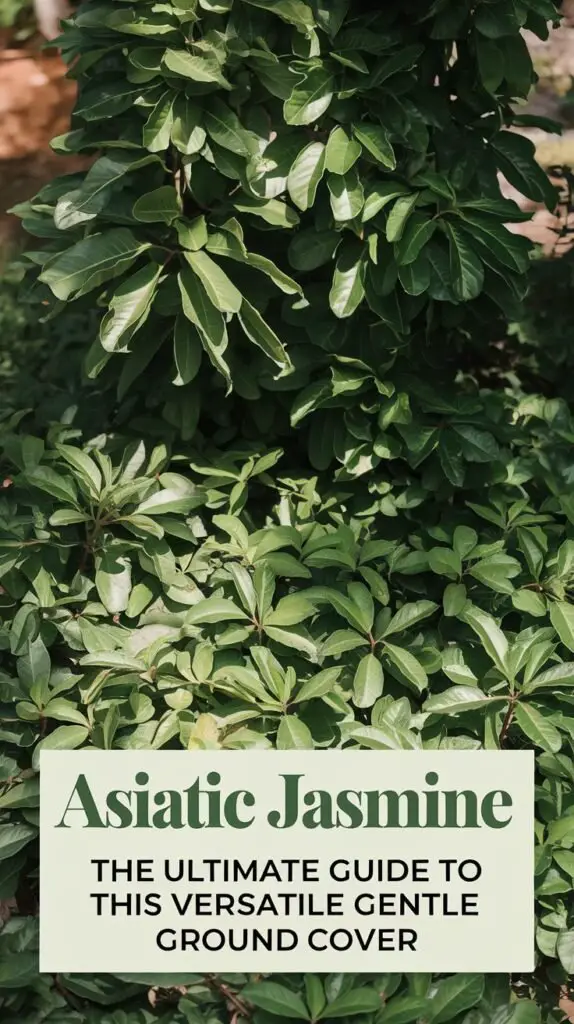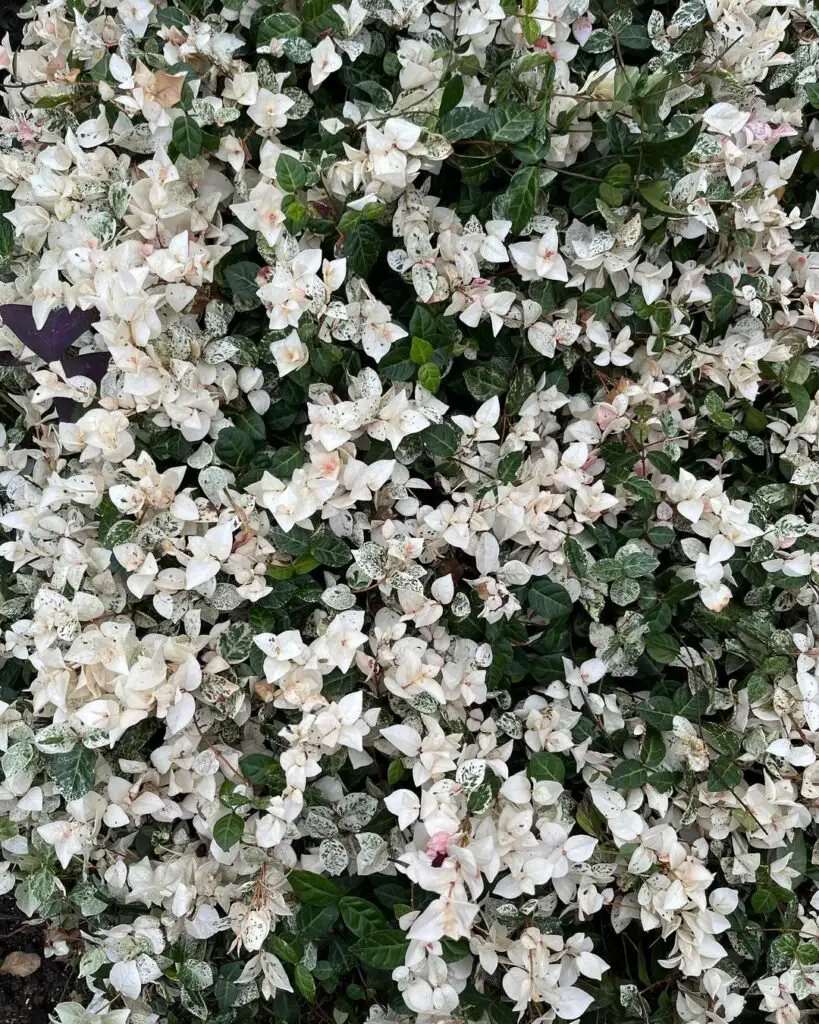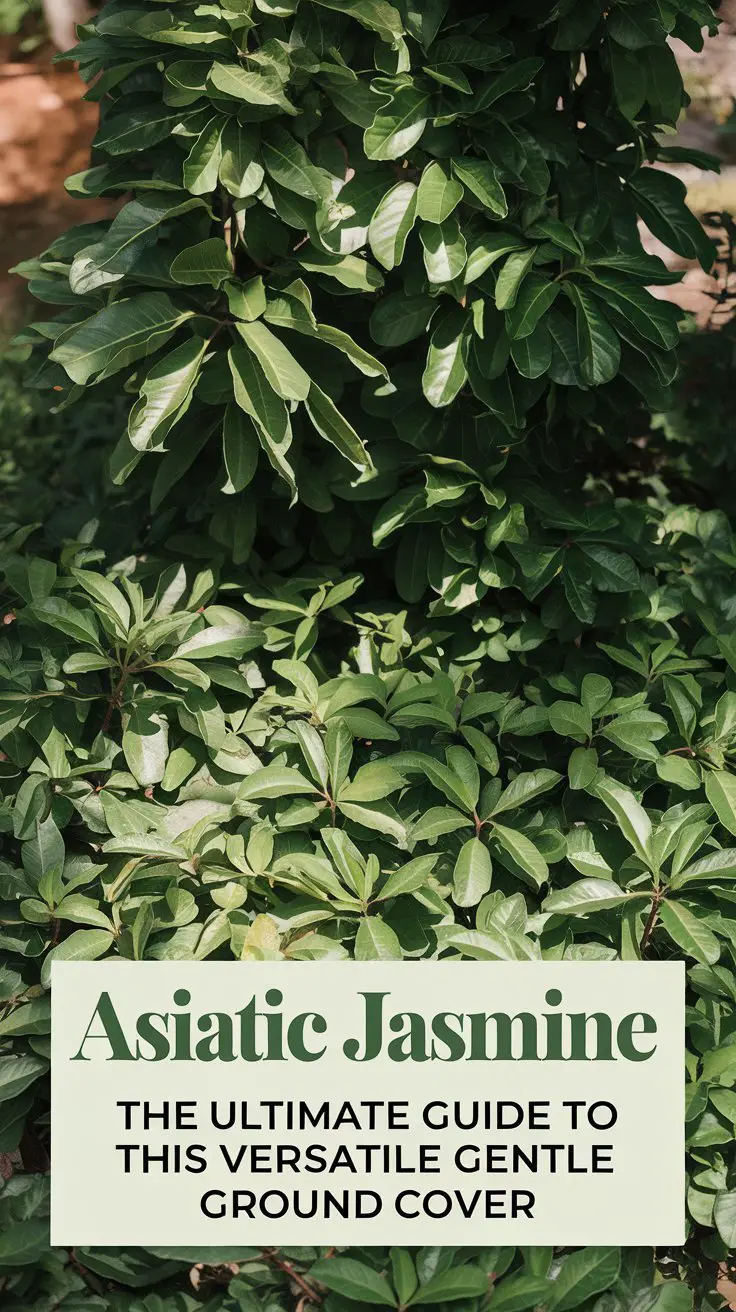Discover the beauty and benefits of Asiatic Jasmine in our comprehensive 2024 guide. Learn about planting, care, and creative uses for this versatile ground cover. Perfect for both novice and experienced gardeners!
Asiatic Jasmine (Trachelospermum asiaticum) is a hardy, evergreen ground cover that offers lush, glossy foliage and easy maintenance. This versatile plant is perfect for landscaping in various settings, from shady areas to sunny slopes. Despite its name, Asiatic Jasmine is not a true jasmine but belongs to the Apocynaceae family, known for its vigorous growth and adaptability.

As a landscape architect with over two decades of experience in subtropical and temperate gardening, I’m excited to share my insights on this remarkable plant. Let’s explore the world of Asiatic Jasmine and how it can transform your outdoor spaces!
Why Choose Asiatic Jasmine?

Before diving into the details, let’s consider the benefits of using Asiatic Jasmine in your landscape:
- Low maintenance once established
- Excellent erosion control on slopes
- Thrives in various light conditions, from full sun to shade
- Drought-tolerant after establishment
- Creates a dense, weed-suppressing mat
- Evergreen in most climates
Now, let’s explore how to successfully grow and maintain Asiatic Jasmine.
Growing Asiatic Jasmine: A Step-by-Step Guide
1. Choosing the Right Location
Why It’s Important: Proper placement ensures optimal growth and spread.
How to Do It:
- Select an area with well-draining soil
- Asiatic Jasmine tolerates full sun to full shade, but avoid deep shade
2024 Trend: Climate-adaptive landscaping is gaining popularity, with Asiatic Jasmine praised for its versatility.
Pro Tip: For fastest coverage, choose a location where the plant can spread freely.
2. Soil Preparation
Why It’s Important: Well-prepared soil promotes healthy root development.
How to Do It:
- Remove existing weeds and grass
- Loosen the soil to a depth of 6-8 inches
- Incorporate organic matter if soil is poor
2024 Update: New organic soil amendments specifically formulated for ground covers are entering the market.
Pro Tip: Consider a soil test to determine if any specific amendments are needed.
3. Planting
Why It’s Important: Proper planting technique ensures quick establishment.
How to Do It:
- Space plants 12-18 inches apart for faster coverage
- Plant at the same depth as they were in their nursery containers
- Water thoroughly after planting
2024 Innovation: Biodegradable planting trays are becoming standard, reducing plastic waste in landscaping.
Pro Tip: Stagger plants in a diamond pattern for more natural-looking coverage.
4. Watering
Why It’s Important: Consistent moisture is crucial during establishment.
How to Do It:
- Water deeply and regularly for the first growing season
- Once established, water during prolonged dry periods
2024 Trend: Smart irrigation systems that adjust watering based on plant needs and weather conditions are becoming more affordable for home gardeners.
Pro Tip: Apply a 2-inch layer of mulch to retain soil moisture and suppress weeds.
5. Fertilizing
Why It’s Important: Proper nutrition promotes healthy growth and dense coverage.
How to Do It:
- Apply a balanced, slow-release fertilizer in early spring
- Repeat application mid-summer if growth seems slow
2024 Research: Studies are exploring the use of mycorrhizal fungi inoculants to enhance nutrient uptake in ground covers.
Pro Tip: Avoid over-fertilizing, as it can lead to excessive growth and increased maintenance.
6. Pruning and Maintenance
Why It’s Important: Regular maintenance keeps Asiatic Jasmine looking tidy and prevents invasion of unwanted areas.
How to Do It:
- Trim edges regularly to maintain desired boundaries
- Mow or cut back severely every few years to rejuvenate growth
2024 Innovation: New electric pruning tools designed specifically for ground covers are making maintenance easier.
Pro Tip: Use pruning as an opportunity to create interesting patterns or designs in large coverage areas.
Creative Uses for Asiatic Jasmine
- Slope Stabilization: Its deep root system makes it excellent for preventing erosion on hillsides.
- Living Mulch: Use it as an attractive alternative to traditional mulch around trees and shrubs.
- Lawn Alternative: In shady areas where grass struggles, Asiatic Jasmine can create a lush, green carpet.
- Container Plant: Its trailing habit makes it suitable for hanging baskets or as a spiller in container arrangements.
- Green Roof Applications: Its drought tolerance and low profile make it a candidate for green roof projects.
2024 Trend: Vertical gardening with Asiatic Jasmine is gaining popularity in urban environments.
Common Problems and Solutions
- Yellowing Leaves: Often due to nutrient deficiency. Solution: Apply a balanced fertilizer and ensure proper drainage.
- Sparse Growth: Usually caused by insufficient light. Solution: Trim nearby plants to increase light exposure or consider relocating.
- Frost Damage: Can occur in colder regions. Solution: Provide winter protection or choose cold-hardy varieties.
- Invasive Tendency: Can spread aggressively if not maintained. Solution: Install root barriers and trim regularly.
2024 Update: New cultivars with less aggressive growth habits are being developed for easier maintenance.
Embracing the Versatility of Asiatic Jasmine
Asiatic Jasmine offers a beautiful, low-maintenance solution for various landscaping challenges. From its ability to thrive in diverse conditions to its year-round green presence, this plant is a valuable addition to any garden or landscape design.
Remember, while Asiatic Jasmine is generally easy to care for, the key to success lies in proper establishment and regular maintenance. With the right approach, you can create stunning ground cover that enhances your outdoor spaces for years to come.
For more information on ground covers and sustainable landscaping practices, visit resources like the American Society of Landscape Architects or your local cooperative extension office. Happy planting, and may your Asiatic Jasmine thrive!
For more gardening tips and plant care guides, visit usagardenhub.com





2 Comments on “Asiatic Jasmine: The Ultimate Guide to This Versatile Ground Cover”